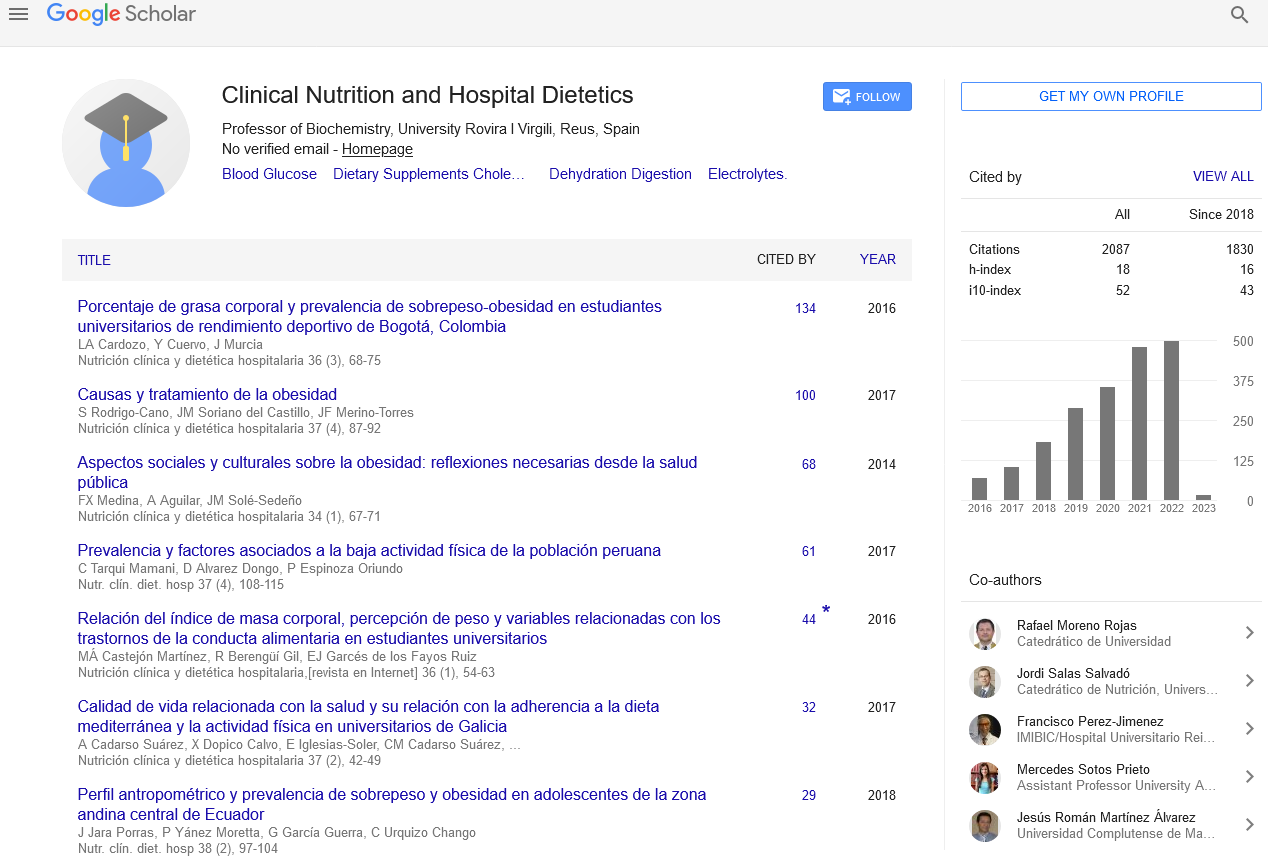Abstract
Assessment practices of food and nutrition in a population exposed to arsenic: a proposal to integrate nutritional risk indicators
Author(s): Monroy Torres, Rebeca1,2; Espinoza Pérez, José Antonio2; Pérez González, Rosa MarÃÂa1
Introduction: The contamination of water with arsenic is a public health problem. Nutritional status, foods habits and exposure source of this metalloid, can reduce its toxicity
Objective: The objective of the study was to assess feeding and nutrition practices into communities in thestate of Guanajuato exposed to arsenic and to identify some nutritional risk indicators that contribute to the health effects of metalloid.
Methods: A cross seccional study, a survey was applied to 30 heads of household, who were selected from a previous study, where the presence of arsenic in children was analyzed; culinary practices, food consumption, sociodemographic characteristics were evaluated.
Results: The average of integrants per family was of six and the average monthly income per household was 259 USD. Containers mainly used to prepare foods, such as soups, were based pewter, aluminum and glazed earthenware. Consumption of fruits and vegetables was low, with little variety, with a high consumption of soda and other foods that do not add nutrients like antioxidants. In addition to food offered from the first year of life is not age appropriate.
Conclusion: We detected the culinary and dietary practices as risk in a population exposed to arsenic, where the low consumption of nutrients that promote the detoxification of metal were low. As these practices should be considered as indicators in assessing the health effects of exposure to metalloid and other contaminants.
Google Scholar citation report
Citations : 2439
Clinical Nutrition and Hospital Dietetics received 2439 citations as per google scholar report
Indexed In
- Google Scholar
- Open J Gate
- Genamics JournalSeek
- Academic Keys
- JournalTOCs
- ResearchBible
- SCOPUS
- Ulrich's Periodicals Directory
- Access to Global Online Research in Agriculture (AGORA)
- Electronic Journals Library
- RefSeek
- Hamdard University
- EBSCO A-Z
- OCLC- WorldCat
- SWB online catalog
- Virtual Library of Biology (vifabio)
- Publons
- MIAR
- Geneva Foundation for Medical Education and Research
- Euro Pub
- Web of Science
Journal Highlights
- Blood Glucose
- Dietary Supplements
- Cholesterol, Dehydration
- Digestion
- Electrolytes
- Clinical Nutrition Studies
- energy balance
- Diet quality
- Clinical Nutrition and Hospital Dietetics




